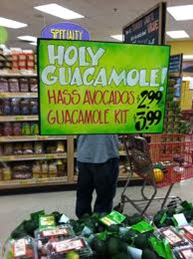The Mezcal Revolución: 5 Mezcals You Should Drink Right This Minuto
By John T. Roosevelt / / 0 comments
Over the past couple of years spirits in general have been exploding with new experimental flavors, distilling processes and smaller distilleries have been giving the big cats a run for their money with better quality ingredients and care, challenging larger brands to step up their game of stagnant taste.
This spirits revolution has also opened up its doors to lesser known alternatives to certain liquors, like mezcal. Made from the maguey plant, a form of the agave plant used to distill tequila. The word mazcal comes from a Mexicali word meaning “Oven cooked agave”. Which makes sense givin the smokey taste of mezcal. Think a smokey bourbon with tequila accents. Now that might sound harsh on your palette at your initial thought, but it’s that smokey flavor that makes bourbon tolerable to many. That word is apparently out on mezcal and it’s growing popularity is flourishing amongst big cities in the U.S. Today, mezcal is still made from the heart of the maguey plant, called the “piña”, much the same way it was 200 years ago, so can we owe it’s recent growth in popularity to the desire for a new taste among the exploding tequila industry? Maybe, in the past 2 years over 20 tequila bars have popped up in New York City alone.
With this mezcal revolution in it’s early stages, we figured, we’d give you a head start on mezcal knowledge with five premium quality bottles to get you acclimated to it’s unique taste. Enjoy.
 EL JOLGORIO MEZCAL
EL JOLGORIO MEZCAL
Quite possibly the king of mezcal, the Cortes family has six generations of mezcal making experience under it’s belt. Literally the entire family is involved in one was or another and when your family lives and breathes a tradition, it only gets better with generations. Look at the Mannings. The most unique aspect of El Jolgorio is each bottle is made from a different family member, you can actually read who made that specific bottle right there on the label.Many of the mezcals are made from wild-harvested agave grown in Oaxaca and are double distilled in copper pots for an incredibly clean flavor with lots of ripe fruit.
Price: $50- 100
El Jolgorio Mezcal

Alipús Mezcal
Created by Los Danzates a very well known name in the mezcal region, Alipús is not for anyone who can’t handle a kick in the gut. It has a definite taste of spicy, peppery, a little burn, dry smoke; everything you want in a strong mezcal. Give this little firecracker to your virgin-mezcal friends after you’ve acquired a taste for the liquor. The aroma is sweet and spicy notes including honey, caramel, biscuits and hazelnuts.
Price: $42
Alipús Mezcal

MarcaNegra Mezcal
MarcaNegra is made from arguably the best type of agave in the world, under a set of oak trees at a very high altitude. The Nolasco family, who owns the brand, uses water from a river that has a microclimate that produces a fruity aroma because of past planted tropical fruit trees like chayote. All those tropical fruit aromas make it into the fermentation because it’s being done in open tanks. With a seamingly perfect blend of vanilla, spice, sweetness with a polished, soft nutty-milky-fudge after taste. MarcaNegra is the fan favorite of the group.
Price: $115
Marca Negra Mezcal

Los Sietes Misterios Espadín
Big aroma of sweetness and some perfume, chilli- or barbecue-sauce aroma there too, along with some woodiness. A sweet, full palate followed, with plenty of rounded, smokey agave character. The keyword is smokey flavor and aromas. Fruity aromas of cherries, raspberries, bananas, and delicate flashes of smoked olive, incense, wet earth, floral notes such as violets and sweet notes of agave delicate skin and snuff. This brand is sure to raise some eyebrows and give a solid taste of a true mezcal
Price: $75
Los Sietes Misterios Espadín
 Ilegal Joven Mezcal
Ilegal Joven Mezcal
Ilegal Mezcal is a high quality, handcrafted product created in Oaxaca, Mexico. The name refers to the time when its creator, John Rexer, had to smuggle the spirit from the village stills in Mexico to his cafe in Guatemala. This exceptional mezcal is created using wild Espadin Agave and slowly roasted over a specially-crafted rock pit in order to absorb the rich flavors of earth and wood smoke. The agave is then crushed, fermented and distilled in small batches using traditional production methods. Bottled and labeled by hand, this product is a result of hard work, expertise, and dedication.
Ilegal Mezcal Joven offers enticing aromas of sweet smoked agave, eucalyptus and earth, complemented by a light floral note. Distinctive notes of rich, earthy agave on the palate merge with hints of pear, apple and white pepper which linger through the finish.
Price: $50
Ilegal Joven Mezcal
Source: //www.rsvlts.com/2013/10/24/the-mezcal-revolucion-5-mezcals-you-should-drink-right-this-minuto/




